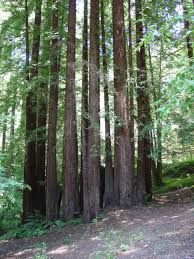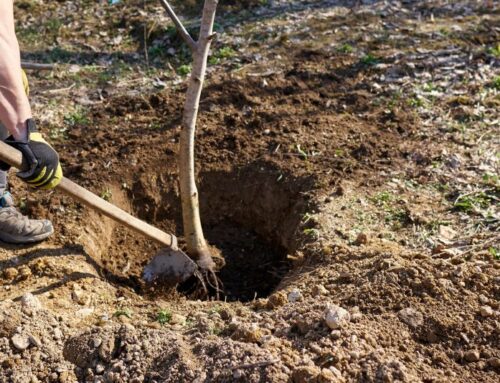Rising from the ashes…

Circle of redwoods, aka fairy ring, growing out of shared stump and lignotuber.
Take a stroll through the redwood forest, and you will notice rings of redwood trees ascending from a shared parental stump. Look closely at the ring’s center, and you may see the charred remains of the parent tree nearly obliterated by past forest fires. Yet, redwoods can resurrect themselves from their semi-buried lignotubers.
What are Lignotubers?
Lignotubers, also known as basal burls or bud collars, are the swollen growth at the base of many trees. The term comes from the root words “ligno”, meaning woody, and “tuber”, meaning swollen growth. Swelling occurs due to starch storage and dormant buds. These lignotubers develop in the young trees of many species, including coast redwood, ginkgo, bay laurel, and many eucalyptus. Their partially to completely buried position insulates them from lethal fires. This is a common trait in fire-prone ecosystems, and is a survival mechanism many species employ when the original tree suffers physical damage.

Lignotuber at the base of a madrone tree.
But, those are wild ecosystems. What use do urban forests have for lignotubers?
Lignotuber growth is much faster than seedling growth because the mature root system is well-established and can support rapid growth. If a tree fails from fire, storms, or other physical damage, it’s possible to save it with lignotubers. Routine monitoring and tree pruning can establish a healthy tree without the cost and time to remove and replace the damaged tree. Because trees produce lignotubers early on, all the dormant buds have strong vascular connection to the parental tree root system. This is different from epicormic shoots (aka water sprouts) and many root sprouts (aka suckers), which have shallow, weak attachments. The stems that generate from lignotubers produce strong tree trunks – with some help from structural pruning to prevent codominance. So next time a redwood or other lignotuberous species fails, consider resurrecting the tree from the hidden power of lignotubers.





